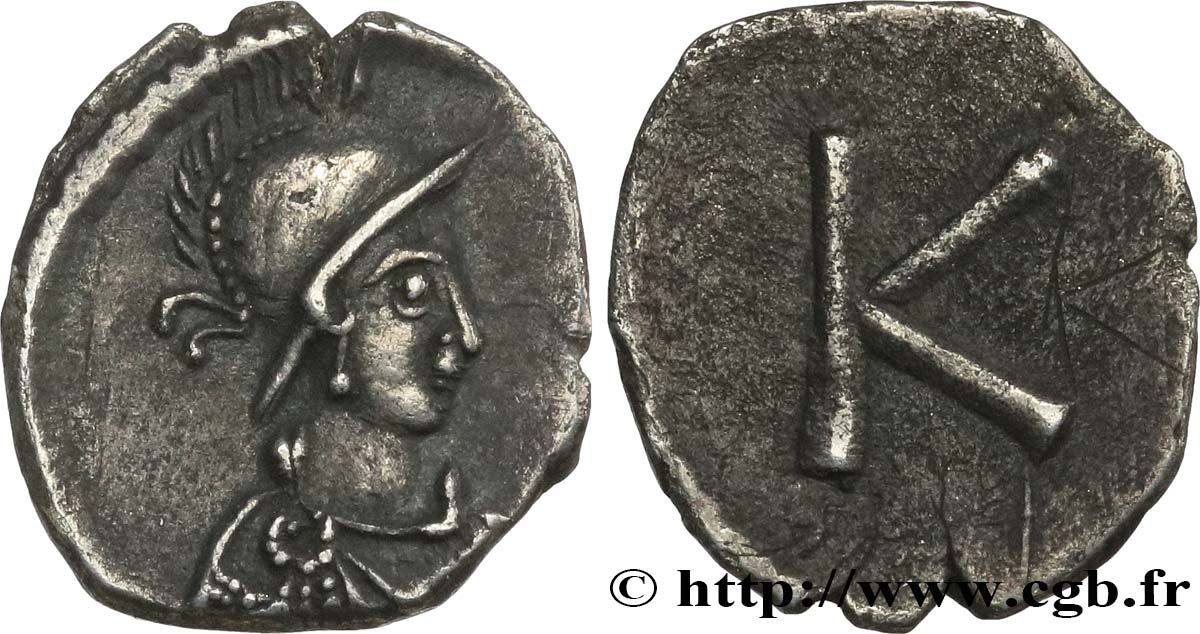Лицевая сторона
Аверс: легенда: ANÉPIGRAPHE.
Аверс: описание: Buste casqué drapé et cuirassé de Constantinople à droite vu de trois quarts en avant (C).
Обратная сторона
Реверс: легенда: K.
Реверс: Описание: Lettre dans un grènetis.
Реверс: перевод: “Konstantinopolis” (Constantinople).
Комментарий
Историческая справка
CONSTANTINOPOLIS
(4th - 6th century)
Constantine, after taking Rome on October 28, 312, did not remain in the Urbs. He moved to Arles which almost became the new capital of the Empire. After 324 and the victory over Licinius, Constantine decided to build a new capital on the borders of Europe and Asia, on the banks of the Bosphorus, resurrecting ancient Byzantium. Rome was already no longer in Rome and Constantinople had not yet been born. Constantine dedicated his new Christian capital in May 330. She will be the new Rome. The old senatorial aristocracy never forgave him. The end of Rome if not of the Roman Empire had just begun. The new capital, first of the Eastern Empire after the death of Theodosius I in 395, became the Christian capital par excellence after the two captures of Rome in 410 and 455 and especially after the deposition of the last Roman emperor of West, Romulus Augustulus, in 476. Constantinople from this date and until 1204, date of its capture by the Crusaders during the fourth Crusade is the great capital of the Western world, the rival of Badgad or Cordoba. The capture of Constantinople on May 29, 1453 puts a definitive end to the Eastern Roman Empire or Byzantine.










 Cообщить об ошибке
Cообщить об ошибке Распечатать страницу
Распечатать страницу Отправить мой выбор
Отправить мой выбор Задать вопрос
Задать вопрос Consign / sell
Consign / sell





